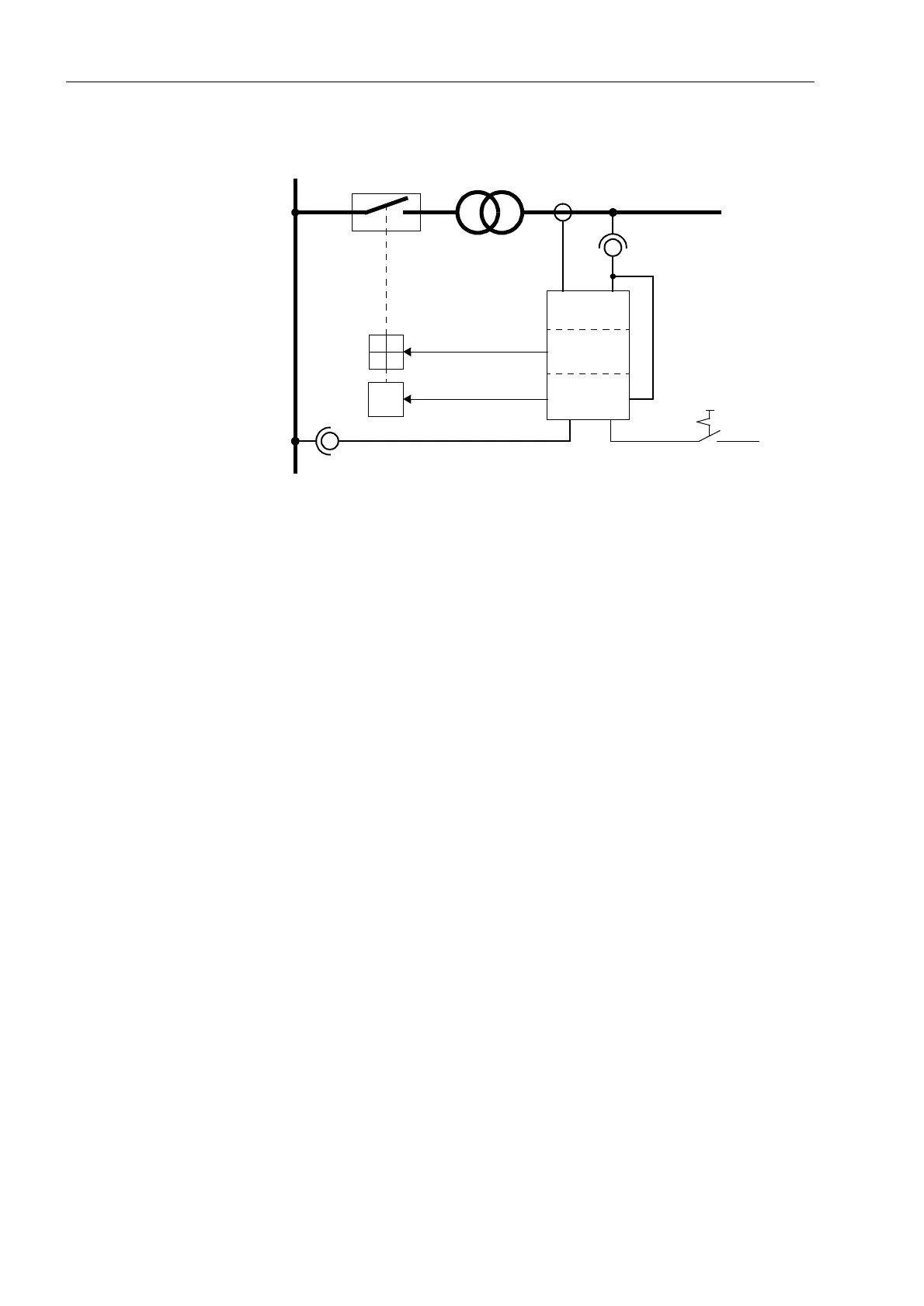Functions
6-198 7SA6 Manual
C53000-G1176-C133-1
Figure 6-104 Synchronism check across a transformer
Furthermore, switching is possible with synchronous or asynchronous system
conditions. Synchronous switching means that the closing command is given as soon
as the critical values (voltage magnitude difference 0D[9ROW'LII, angle
difference 0D[$QJOH'LII, and frequency difference 0D[)UHT'LII) lie
within the set tolerances. For switching with asynchronous system conditions, the
device calculates the correct timing of the closing command from the angle difference
0D[$QJOH'LII and the frequency difference 0D[)UHT'LII such that the
voltages on the bus-bar and the feeder circuit have exactly the same phase
relationship at the instant that the circuit breaker primary contacts close. For this
purpose the circuit breaker closing time must be programmed into the relay. Different
frequency limit thresholds apply to switching under synchronous and asynchronous
conditions. If closing shall be permitted exclusively under synchronous system
conditions, the frequency difference limit for this condition can be set. If closing is
permitted under synchronous as well as under asynchronous system conditions, a
frequency difference below 0.01 Hz is treated as a synchronous condition, a higher
frequency difference value can then be set for closing under asynchronous system
conditions.
The synchronism check function only operates when it is requested to do so. This
request can come from the internal automatic reclosure function, from the manual
closing command or from an external automatic reclose relay via binary input.
The synchronism check function gives permission for passage of the closing
command. Optionally, a closing command my be issued by the synchronism check
function. This can directly control the closing coil of the circuit breaker, or be
connected in series with the automatic reclose command.
The time window during which synchronism check is permitted is limited by an
adjustable synchronous monitoring time. Within this period, the programmed
conditions must have been met otherwise closing permission will not be given. A new
synchronism check sequence requires a new request.
The device outputs messages if, after a request to check synchronism, the conditions
for release are not fulfilled, i.e. if the absolute voltage difference 0D[9ROW'LII,
the absolute frequency difference 0D[)UHT'LII, or the absolute phase angle
difference 0D[)UHT'LII lie outside the permissible limit values. A precondition
7SA6
Bus-bar
TRIP
CLOSE
U
line
U
bus
I
Protection
Sync
L+
Transformer
Discrepancy
switch

